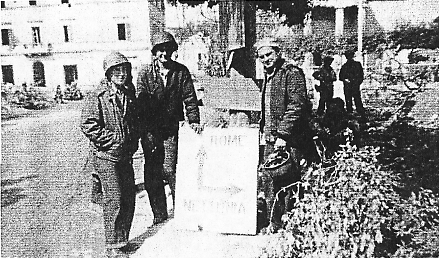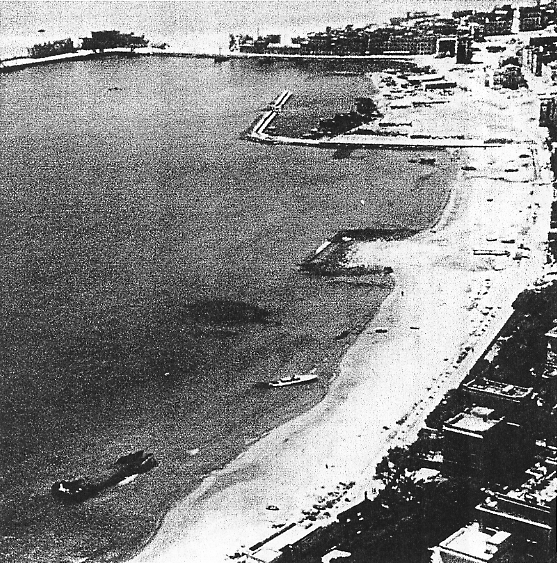Analysis

Easter came early in April of
'44. Some of our group went ashore to the services being held in an Army
bivouac. While waiting for the LCVP to come in to bring them back, they
played a game of touch football on the beach.
Monday, I went in to the beach to
cannibalize one of the two disabled LCTs which had been driven ashore.
Working away there , my back to the shore, I was startled by a tremendous
explosion. I swung around in time to see a soldier and a section of track
come crashing to the ground. He kicked a couple of times, like any animal,
and his war was over. The place was the exact spot where the football game
had been played yesterday, hi the U. S. Army picture, taken some years
later, you can see one of the craft still there.
There have been reams of Military
analysis written about this operation, much of which questions its worth.
Winston Churchill called it a stranded whale. Gen. Lucas was replaced
because, as his superiors claimed, he was more concerned with logistics than
aggression. I am inclined to agree with Lucas. Most of our landing craft
were in England for the Northern France invasion and these were the only
vessels that could get into Anzio. We were small in number and well worn.
Laying in a good supply was all important.
In the ridiculous movie version which
magnified the ill-fated role of Darby's Rangers, Gen. Patton made some kind
of snide remark to Lucas. If Gen. Patton had been in charge and proceeded to
the Alban Hills as his temperament seems to indicate he would, he would have
become the Custer of WWII. There was no Red Ball Express here to bail him
out as it did in France when he ignored logistics. A supply line to the
Alban Hills simply could not have been defended . As it was ,we were barely
able to hold a 6 by
9 mile area. During the vicious counterattacks of February
when Hitler decreed we should be driven into the sea, the beach head shrank to a
mere 3 by 6 mile area. The 3rd division which suffered 3000 casualties in its
first 10 days at Anzio, plugged the gap.
Most of the critics have ignored an obvious lack
of air support. Germany was able to move 100,000 men and supplies down the
narrow Italian Peninsula within a few days. Where were our fighters
which should have been destroying bridges and
railroads?

The author, Gheski and
Joe Di Panfilio
The answer to this lies in a well
hidden disaster which took place at Bart. In December of '43, the harbor at
Bari was glutted with ships containing Gen. Doolittle's air command from
North Africa. Add to this a number of tankers, a shipload of mustard gas and
a negligent British commander, and you have a duck shoot for about a hundred
German bombers. It has been called America's second Pearl Harbor.
Was Anzio worth it? Yes! While we did not relieve
the pressure at Cassino as much as hoped, the 100,000 German troops there
were not at Normandy on D-Day. We were horribly out positioned at Cassino
and could not prove ourselves. At Anzio, we met the best that Germany could
muster, on even terms, and beat them soundly. The loss of the beach head
probably would have affected the timetable for the invasion of Normandy.
Germany already had jet planes, rockets and were well on their way to a
nuclear bomb. The ease with which they detected night troop movements such
as the 36th's Rapido crossing and the advance of Darby's Rangers along the
Mussolini Canal, lead me to believe they were well ahead of us in infra-red
detection. I can personally attest for the accuracy of the radio controlled
bomb which struck the "Elihu Yale." With a little more time, the
cost of victory would have been much dearer.
Field Marshall Albert Kesselring in an interview
printed in The Washington Post said, "If you had not pitted your
strength against us at Anzio-Nettuno, you would never have landed in
Northern France."
Hats off to Major General John P. Lucas who laid a
firm foundation and to that dog faced soldier boy that did the job!

The beachhead from the air
This picture taken much later, shows one of our LCTs still
there
Next
Chapter
Contents
Copyrighted 2000
No part of the
text or personal photos may be copied in any form without the express
permission from the author.


© 2000 LCT Flotillas of World War II ETO PTO
Contact us

